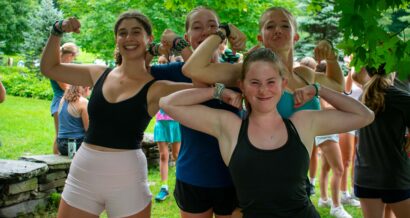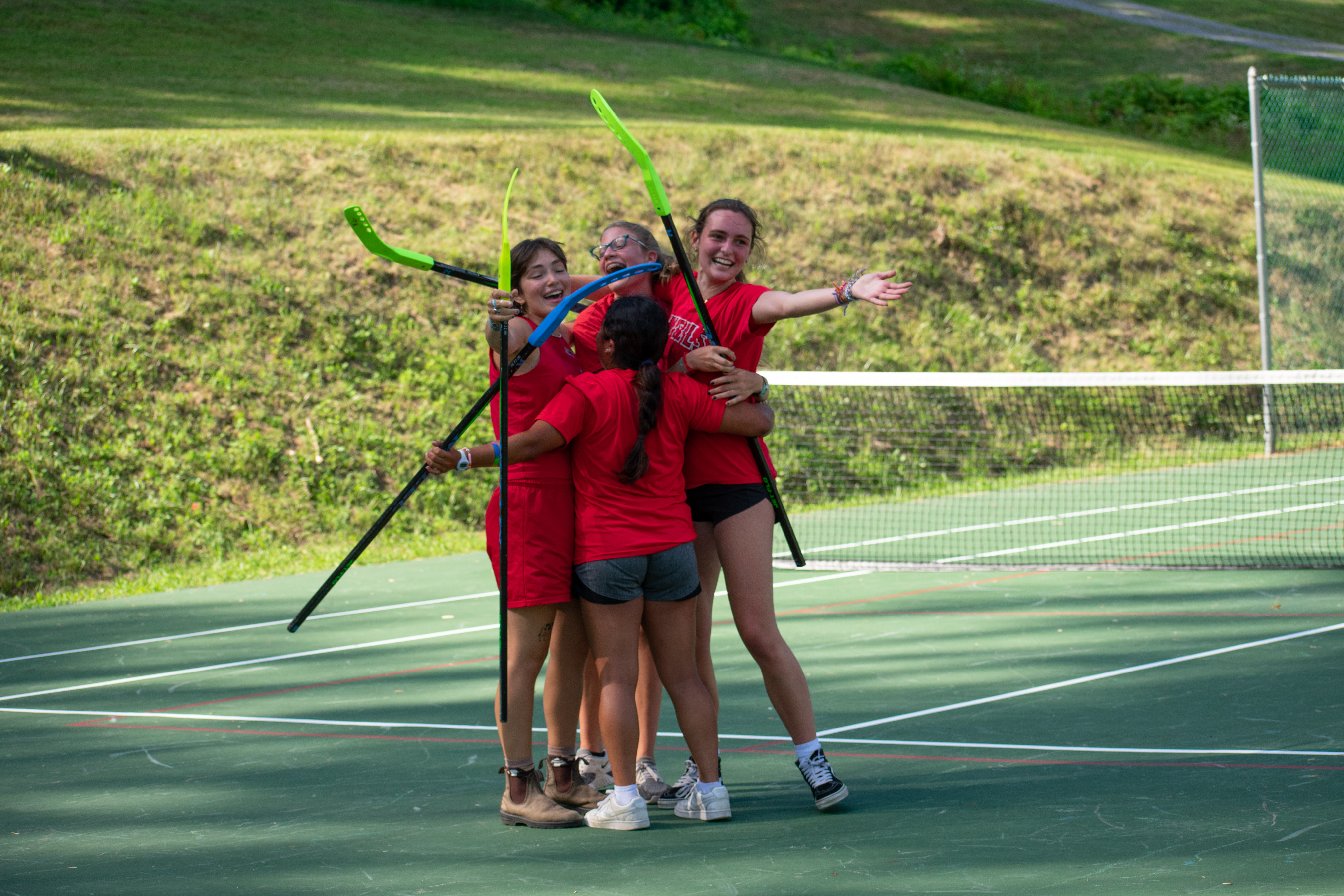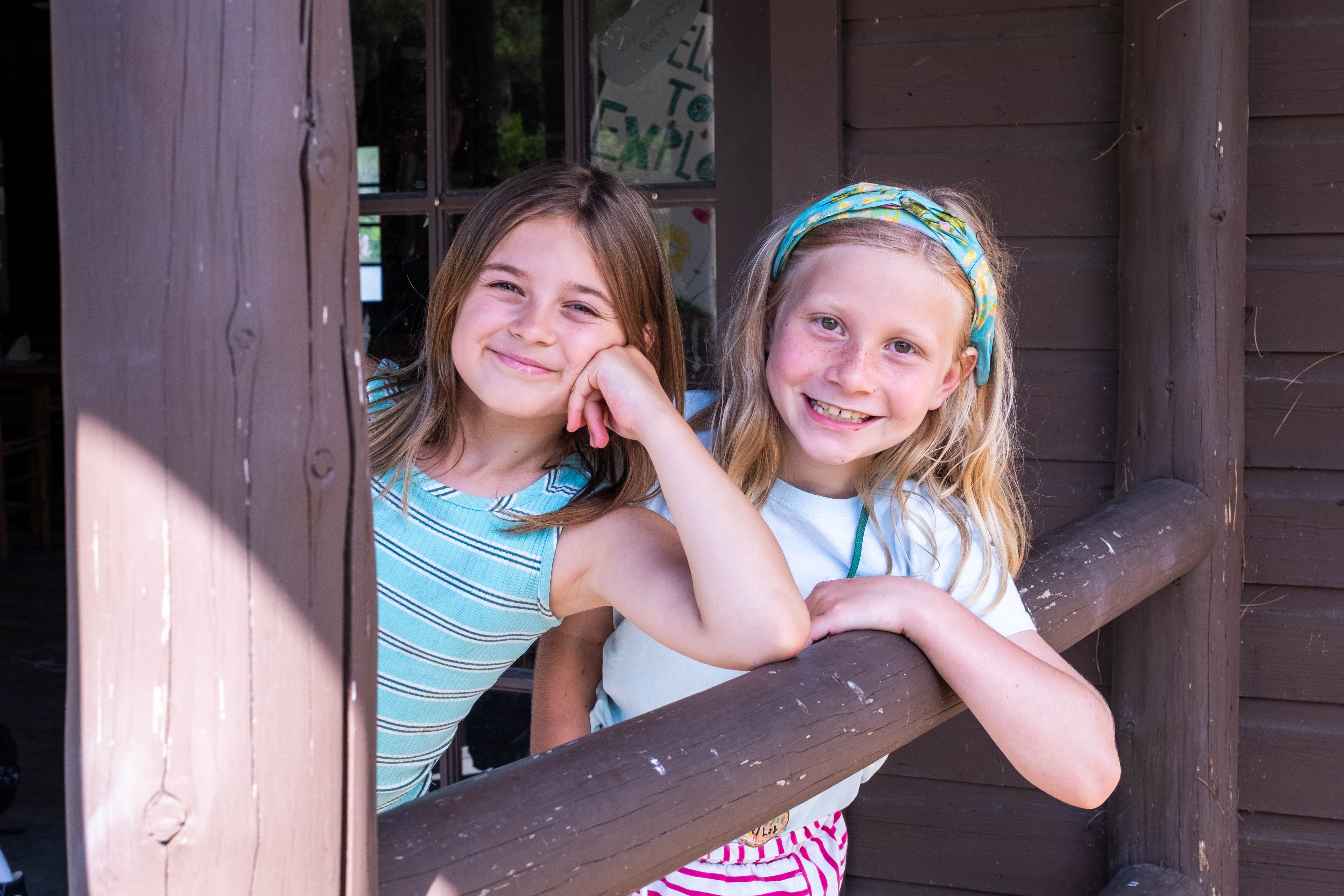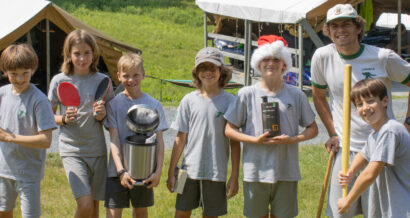 Article
Article

Every summer at camp brings moments that take your breath away. These moments can’t be predicted or manufactured—they appear out of nowhere and provide an all-encompassing feeling of gratitude and awe. The past summer was no different. Picture for a moment the heated final match of an all-camp street hockey tournament, culminating in a special event where two teams face off for all the glory, while the entire camp cheers them on. The teams were made up of all ages, and to provide equal opportunity and playing time, the captains of each team split the shifts between the older campers (12-15) and younger campers (8-11). As darkness rapidly approached, the final game was close, with one team down by a single goal with five minutes to play. Both teams went back and forth, but for the final five minutes, the captains put on their largest and oldest players (except for one). There was an eight-year-old who loved all things sports, and while he wasn’t large in stature, he was huge in heart. He was a small figure amongst the giants surrounding him on the court, but he was not phased.
 On the surface, this decision by the oldest campers to include the youngest camper in this way would bring tears to almost anyone’s eyes, but little did we know the best was yet to come. With less than three minutes left in the game, the ball suddenly came to this camper at half-court. For a brief second, you could see the shock on his face that he’d placed himself in the perfect position for the attempted clear by the other team. But just as quickly, he launched the ball across the court towards one of his teammates, who immediately one-timed it into the top left of the goal. Tie Game! There was a stunned silence with the 240 people looking on. Did that just happen? Did an eight-year-old plant the perfect pass in the waning minutes of the finals? Was he destined to be in the NHL someday? And then the crowd erupted in a way I had never seen before. The announcers started cheering loudly as the small figure was surrounded and hoisted above the shoulders of the largest players. The expression on that child’s face at that moment will be forever engrained in my mind, showcasing the power, awe, and transformation that occur when we create an intentional community.
On the surface, this decision by the oldest campers to include the youngest camper in this way would bring tears to almost anyone’s eyes, but little did we know the best was yet to come. With less than three minutes left in the game, the ball suddenly came to this camper at half-court. For a brief second, you could see the shock on his face that he’d placed himself in the perfect position for the attempted clear by the other team. But just as quickly, he launched the ball across the court towards one of his teammates, who immediately one-timed it into the top left of the goal. Tie Game! There was a stunned silence with the 240 people looking on. Did that just happen? Did an eight-year-old plant the perfect pass in the waning minutes of the finals? Was he destined to be in the NHL someday? And then the crowd erupted in a way I had never seen before. The announcers started cheering loudly as the small figure was surrounded and hoisted above the shoulders of the largest players. The expression on that child’s face at that moment will be forever engrained in my mind, showcasing the power, awe, and transformation that occur when we create an intentional community.
Fast forward to October, when summer camp directors across the country are talking with families who might be interested in camp for their children the following summer. I was chatting with an alum this past week who had a ten-year-old who had just started to float the idea of wanting to go to camp. Chatting with people who haven’t stepped foot on the property since they were a camper is always wonderful. In those conversations, they appear to be instantly transported back to the memories of their childhood, the ranks they attained, the names of friends documented in the rafters, and the favorite counselors who helped them on the path to becoming their best selves.
Our conversation turned at some point to the evolution of working with children in the present day and how programming might have changed to facilitate those changes. As it turned out, we were both reading Jonathan Haidt’s The Anxious Generation, which provided a nice backdrop for discussing these changes and how camp plays an increasingly important role in the development of children today.
As a child, I remember the hours of uninterrupted play in the woods around my house growing up, adhering to the one rule of making sure I “returned home before it was too dark to see the hands in front of my face.” While I still reminisce about the power of that free play, I am not here to detail how every child needs to spend four hours playing in the woods each day after school (although that might be fun). In reading Haidt’s book, I was struck (but unsurprised) by the data he presents on the impact of a “phone-based” childhood and the decline of unsupervised outdoor play on the mental health of today’s youth. If I’m honest, I see it in my own kids. They love the outdoors, but sometimes it feels like a nagging chore to get them to put down their devices and disappear into the woods (except when it is time to return to camp).
While I still reminisce about the power of that free play, I am not here to detail how every child needs to spend four hours playing in the woods each day after school (although that might be fun). In reading Haidt’s book, I was struck (but unsurprised) by the data he presents on the impact of a “phone-based” childhood and the decline of unsupervised outdoor play on the mental health of today’s youth. If I’m honest, I see it in my own kids. They love the outdoors, but sometimes it feels like a nagging chore to get them to put down their devices and disappear into the woods (except when it is time to return to camp).
In his book, Haidt uses the example of what psychologists call “awe”—a deep emotional state of wonder and connectedness that can help counterbalance the anxiety often induced by constant digital engagement. That “awe” experience is something we consistently see throughout the summer with campers, and I believe that the immersive experience in nature, free from technology, can serve as a powerful alternative to the societal shift we are seeing in children.
The camp experience is distinctive because it removes children from their usual surroundings, particularly their growing dependence on smartphones and social media, and provides them opportunities to get to know themselves and the world around them. Haidt argues that the decline in unsupervised play has led to a lack of opportunities for children to develop resilience, confidence, and problem-solving abilities, all of which are critical for their mental health. At camp, children can engage in the kind of adventurous, unsupervised play that Haidt advocates for, fostering social bonds, leadership skills, self-confidence, and a sense of autonomy—key elements often missing in modern childhoods dominated too often by screens.
 This “awe” experience that we see every summer at camp holds particular significance because it redirects their attention away from the internal pressures of digital life—such as social comparison and the constant pressure to achieve perfection—toward external, expansive experiences. The eight-year-old referenced above was playing amongst the oldest campers and wasn’t comparing himself to anyone on the hockey court. He was just playing the game with a group of friends. There is great power in summiting Mount Washington with 7 of your closest friends, lake hopping deep in the Adirondacks for five days, achieving a well-deserved rank after struggling with a particular test for days or weeks. Research indicates that these awe-inspiring experiences can foster better emotional regulation, ease anxiety, and serve as a vital counterbalance to the overstimulation and emotional dysregulation often associated with the digital world.
This “awe” experience that we see every summer at camp holds particular significance because it redirects their attention away from the internal pressures of digital life—such as social comparison and the constant pressure to achieve perfection—toward external, expansive experiences. The eight-year-old referenced above was playing amongst the oldest campers and wasn’t comparing himself to anyone on the hockey court. He was just playing the game with a group of friends. There is great power in summiting Mount Washington with 7 of your closest friends, lake hopping deep in the Adirondacks for five days, achieving a well-deserved rank after struggling with a particular test for days or weeks. Research indicates that these awe-inspiring experiences can foster better emotional regulation, ease anxiety, and serve as a vital counterbalance to the overstimulation and emotional dysregulation often associated with the digital world.
Camp also creates conditions where children can take risks, being encouraged to step outside their comfort zones in a safe and supportive environment. While in any given activity, they are learning hard skills, camp is focused more on the soft skills inherent in the learning process. By asking questions like, “How do you want to approach things if they don’t go your way?” or “How do you want to feel if you miss the target in archery,” we are nurturing the kind of real-world coping mechanisms and emotional resilience that are often missing in today’s highly structured childhoods. Haidt’s emphasis on returning to more play-based and community-oriented childhoods aligns perfectly with the benefits of camp, where face-to-face interactions and community building take precedence over virtual connections.
The camp experience isn’t the catch-all solution for solving the issues surrounding the increased dependence on technology we are seeing in children. But in moments that happen in the approaching twilight at the end of a well fought hockey game, we offer a space to rediscover the joys of exploration, connection, and awe—elements critical for combating the anxiety and social isolation that Haidt identifies as central to the mental health crisis facing Gen Z. By immersing children offline in nature, camp can introduce kids to that “awe” experience that helps develop skills that many of today’s adolescents are missing.
And in moments like these, I realize I have the greatest job in the world.

